Digital Marketing 101 - A Beginners, "Everything You Need To Know" Guide
 31 May 2022
31 May 2022By Petar Petrovic
[2025 Update]
Why digital marketing?
In 1964, Bob Dylan wrote “ The times they are a changin ”. Since then, things have well and truly changed. The way we consume information, listen to music, and even watch our favourite TV shows has been radically altered thanks to the technological revolution.
Over the last two decades, the world around us has increasingly pivoted into the digital domain. This digital shift has had a significant impact on the ways in which we do business, as well as the approach businesses take towards their customers.
Traditional marketing has taken a back seat and, more importantly, digital marketing is at the forefront of the advertising industry. With the rise of technology, consumer behaviour has changed. The internet has created a global network and, as a result, smartphones have made it incredibly easy to access content and communicate with one another.
In short, businesses are having great success with digital marketing. Networking, accessibility, and the ability to analyse data has eclipsed traditional marketing techniques.
Digital marketing isn’t optional. It’s oxygen for your business. If you're not showing up online when your customers are searching, scrolling, comparing, and deciding, you're invisible.
Think of it like this:
Your website is the storefront
SEO is the signage
Ads are your sales team
Socials are your shop window
Email is your follow-up
And analytics? That’s your CCTV footage showing you what’s working and what’s wasting your time
It's not about going viral or getting followers and likes - it’s about building an engine that earns attention, nurtures trust, and drives leads even when you’re off the clock.
Let’s go over the key benefits:
1. Huge Market Reach
You can reach your ideal customer anytime, any place.
Reach people anywhere and everywhere (welln maybe not if they’re deep sea diving - but you know what I mean).
Most people in the developed world are using a smartphone. Consequently, you have access to billions of people that are scrolling around asking Google questions.
For instance, if you have Search Engine Optimisation (SEO), and are running a pay-per-click (PPC) campaign you will attract people to your business. If you’re solving their frustrations then the potential for financial returned increases dramatically.
Your potential customers are all online.
In 2021 there are 4.6 billion active internet users – which is around 60% of the world’s population.
In Australia alone, there are 22 million active users as of January 2021 – that’s the majority of Australians online every day.
The one thing that all businesses need is new customers, and the internet is a great platform to let people know about your products/services and start establishing rapport with your future clientele. Your website and social media presence play a significant role in your digital media strategy, when used correctly, they act like a magnet, attracting like minded people to your business.
2. Higher Return On Investment (ROI)
As a result of the large reach, digital advertising has a much higher return on investment.
The advertising has to be done through a professional approach that establishes your target market and your unique proposition.
For example, imagine running an ad campaign for a new running shoe through a billboard. Who sees it? Everyone. You have no control over the demographic viewing the advertisement. To clarify, that’s not entirely true - you get to pick the location of the billboard.
On the other hand, think about running an ad campaign through Facebook. You get to literally select the age, gender, profession and interests of the demographic that you show content to. Furthermore, you get to explain the benefits of your shoe and give them a strong reason to buy it.
Having a clear target audience generates higher engagement but, more importantly, gives you a higher return on investment.
3. Value for Money
Traditional marketing is extremely expensive, especially if you’re a small business. The fees outweigh the benefits. The initial costs could cripple your business.
The list of fees regarding traditional marketing are too long to note, think about the need to print flyers and how time consuming and expensive it is – not to mention the cost of advertisement on a billboard or TV.

Note
In Australia, you're looking at paying $1,500-$10,000+ per month to have a billboard in a metro area.
The other issue with traditional marketing is that the reach isn’t measurable. It’s very hard to collect data on who is seeing your ad and how people interact with it.
Traditional marketing is also very broad, with little ability to narrow the focus. This isn’t ideal for most small businesses, especially those specialising in a certain industry or in a specific area.
4. Personalised Approach
You can narrow down your advertisements on social media platforms.
For instance, creating informative content like infographics, or ‘how-to videos’, that cater to certain pain points your target demographic is having issues with. This type of content creates engagement, and gets your clients interacting with you. Then they start asking questions, which creates a buzz on your page.
Building a strong relationship with your audience boosts your brand awareness and generates a loyal customer base. This should be the focal point of any business.
In the words of Jeff Bezos: “We’re not competitor obsessed, we’re customer obsessed. We start with what the customers needs and we work backwards.”
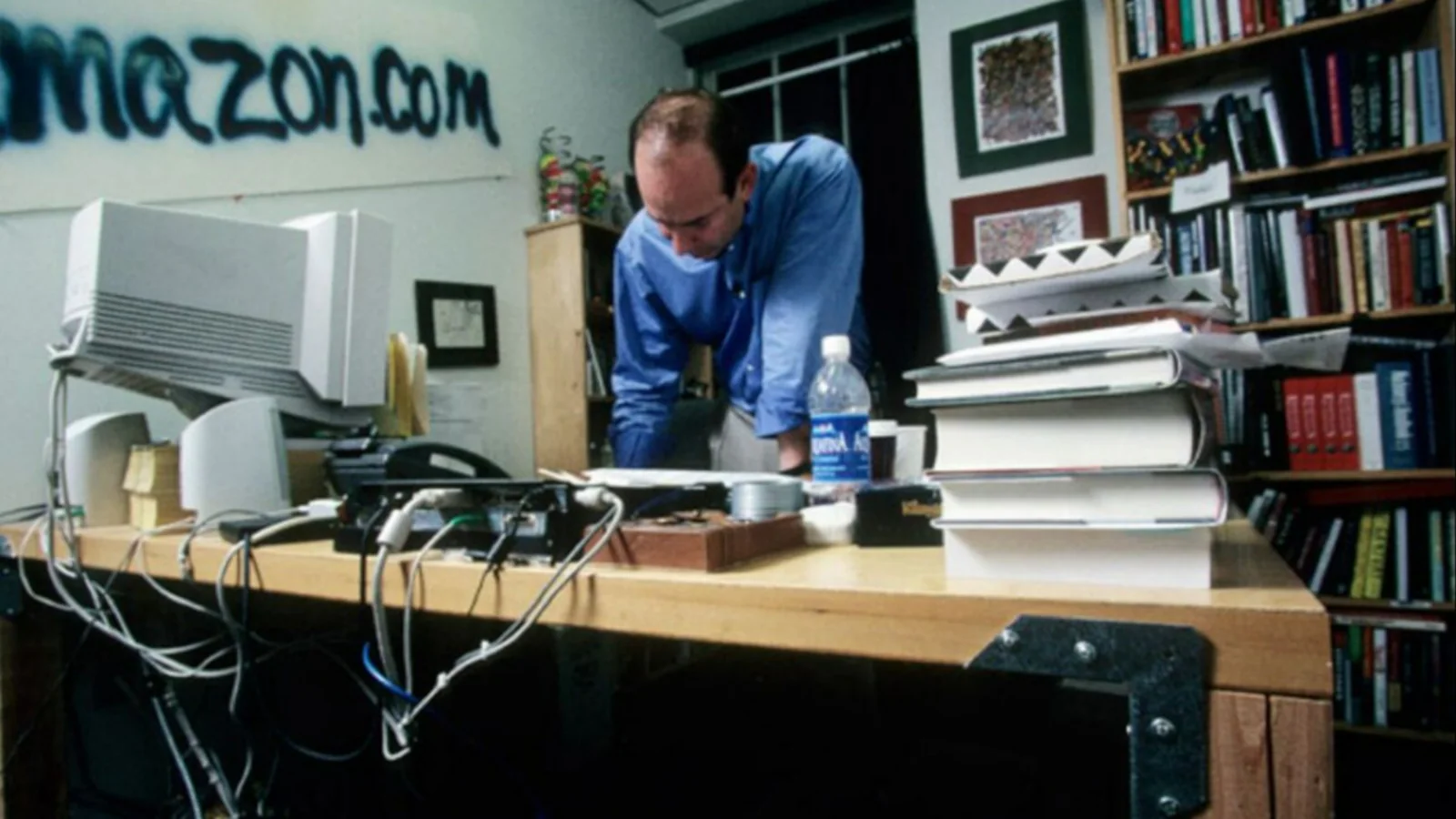
5. Competitive Edge
Your competition is most likely doing some form of digital marketing.
And if they’re not, that's your chance to take hold of your niche. If they are, you can use this to your advantage by analysing their marketing techniques and strategies, adopting what works.
Good marketing is all for show, you simply cannot hide it.
Having this awareness, you can use it to your advantage by seeing what people respond to and what they shift away from. More importantly, you can leverage this information to create a superior campaign – consequently, pulling their customer base into your influence and business sphere.
6. Convenience
You can set up your digital marketing more or less from the comfort of your own home.
If you can’t do it all, you can do the majority. Most people have access to a laptop or smartphone, and with those two items you can do 10 times more for less than you would with traditional marketing strategies in the past.
7. Scalability and Optimisation
Creating a digital marketing strategy not only gives you clear goals and objectives for the future,
it allows you to better understand your customers. Being consistent with your digital marketing output allows algorithms to adapt as well as optimise your campaign strategy giving you a better ROI over time.
Digital marketing increases the rate at which you gain new customers. The ability to check on performance and gain insights into the engagement of your content, allows you to form a deeper relationship with your client base.

Warning: Implementing these strategies will turn your business super saiyan.
Let’s shift our focus to common strategies you need to be utilising to occupy market share and have stability in your business:
Search Engine Optimisation (SEO)
SEO is a fundamental strategy. Years ago, it was common practise to focus on SEO as a stand alone way of generating leads & sales. From 2025 onward, think of SEO as the foundation that you build on.
Are blogs and educational articles still relevant in 2025? Yes - but they have to be executed with intent and match your customers stage of awareness.
These aren’t blog posts about a day in the life, or writing about something random that you’re passionate about. The goal is to write posts that are specific to your client base, showing them how your product / service will help alleviate and solve a particular problem they’re having.
You need to change your perspective on sales, and shift away from selling to people based on features and benefits. Start solving peoples problems based on your techniques as well as your products / services. The moment you do this, your business will flourish.
Blogging with SEO in mind does two things:
Pushes your website up Google’s ranking index – Google likes to know that your website isn’t dormant.
Drives organic traffic to the website – resulting in engagement and greater reach.
Let’s say you’re selling computer parts. One of the things that people commonly search for is ‘how do I make my computer faster’. Help your readers diagnose the problem and integrate products from your shop.
Let’s use another example, for instance, let’s say you’re a fitness coach. A common query might be 'how do I lose belly fat'.
You’d proceed to write articles relating to :
‘HIIT’ (High Intensity Interval Training)
‘fasting’
‘calories in vs calories out’
And topics such as ‘nutrition’ and ‘hormones’ .
Building your blog and content over time helps to give your business more exposure and build trust with your audience. The more intention you put behind content, the higher quality your traffic source and wider your funnel.
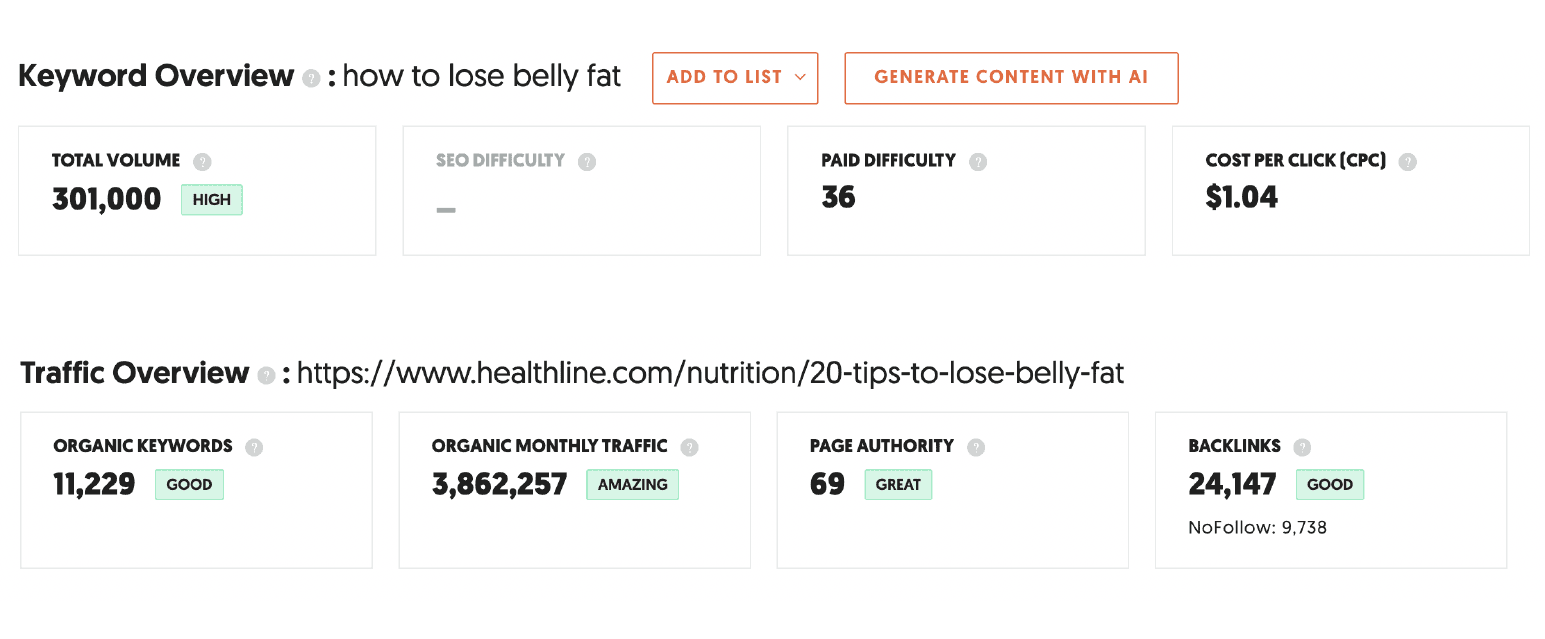
The term 'how to lose belly fat' has 301K monthly searches in the world, and this article on healthline, has an insane 3.8 million visitors every month. That's a crazy amount of organic traffic to the website.
Create a Video Strategy
YouTube is the second largest search engine in existence, with video carousels doubling in Google search results in recent years.
When people go on YouTube they’re looking to find answers to their questions. Think about things that people in your niche might be asking themselves and then make an informative video on it.
As an example let’s use the fitness coach again. People that were searching for 'how to lose belly fat?' would also be searching for 'what to eat to lose belly fat fast?'. Knowing this, you could upload a 'what I eat in a day to lose belly fat' video detailing your total calories, in a full day of eating and training.
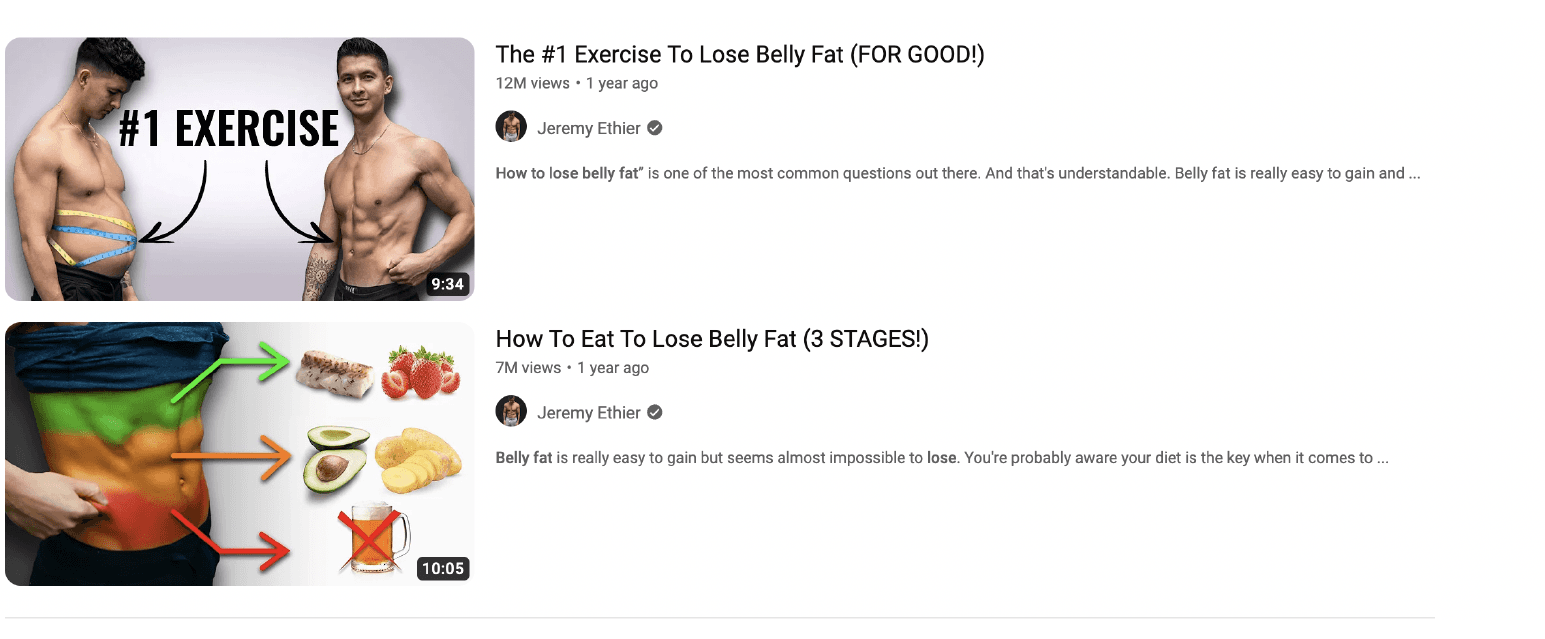
Jeremy Either appears as the 1st and 2nd videos for how to lose belly fat - that's a lot of reach for his channel.
Take note of the titles: they draw you in and tell you exactly what to expect.
In conclusion, when creating videos try to be as concise and pragmatic with the information that you’re putting out there, and don't venture too far off topic. You'll receive more views and engagement if your videos are precise and to the point.
Social Media Marketing
Social Media Marketing is a great way to interact with your audience, as well as raise brand awareness and generate new leads.
It’s important when starting out to pick one social media outlet and master it, build a framework and carry it on to the others. Picking the social media platform you want to focus on should be made based on where your target audience is, and catering to that platform first.
Secondly, think about the platform you’re using and how people interact with that platform. For example, YouTube is primarily used for how to videos and entertainment.
Facebook is different. People aren’t on Facebook with a credit card in hand looking to buy, they often scroll the news feed and share things that strike an emotional connection. For example, a story that they can relate to, something interesting or new that they’ve learnt, or something humorous. Honesty + Humour = Engagement.
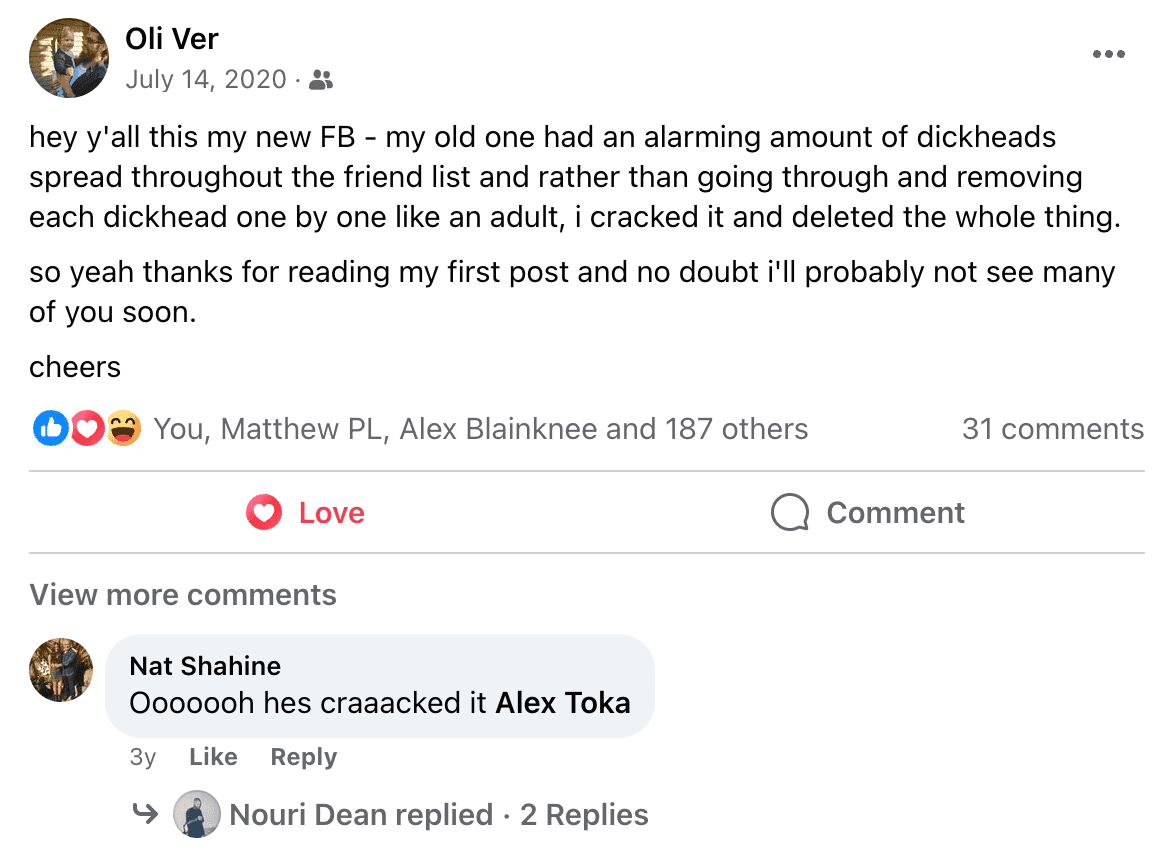
If you’re trying to bring people into your world, a successful way to do so is by sharing your story in a way that's relatable to your audience.
The focus on the social media outlets is to have a loyal fan base, so don’t get too concerned about numbers (particularly when you'r starting out). Big numbers don’t matter if you have minimal interaction with your audience. Going back to our fitness coach example – you could share your ‘hero’ story about how you decided to get into shape, and the events that led you to that point. People love to know your background, and back story. If they can relate to you, they'll engage.
Paid Per Click Advertising (PPC)
Paid Per Click Advertising is the next marketing tool at our disposal. There are billions of people using Google for queries and questions every day. PPC allows you to set a monthly budget and literally pay per click that your advertisement receives.
Depending on your objective (sales/leads/traffic), set your ad by choosing keywords and phrases that will trigger your ad to show, then choose the target audience and set your budget.
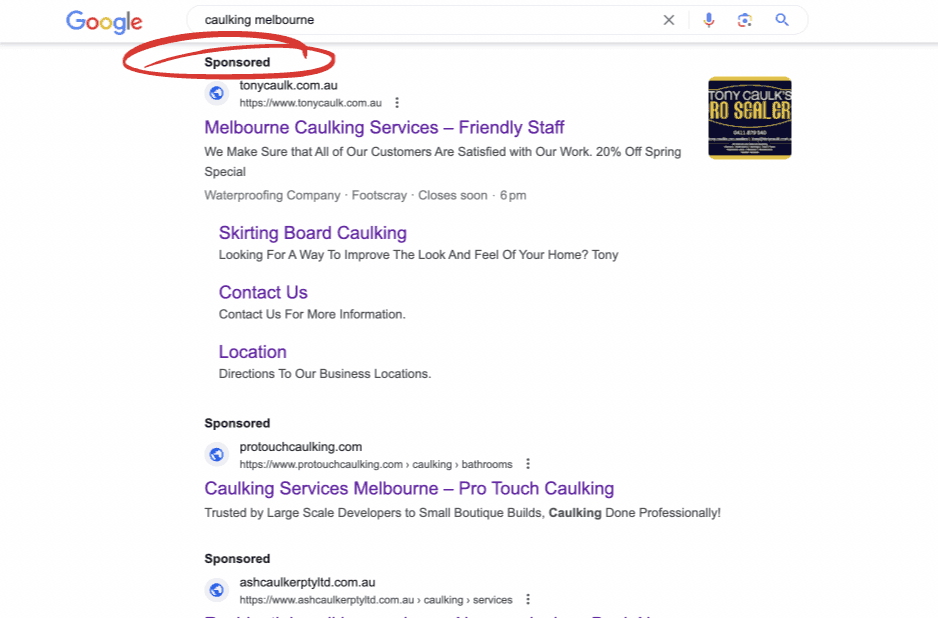
PPC is best used if you’re running a special promotion, or you have a no brainer offer to share with your clients. It's also very effective at driving sales and acquiring leads for a service based business.
Using the fitness coach example, let’s say they’re wanting to promote a discounted price off their training programs. Along with this, they want to drive leads and traffic to their landing page. The keywords could be 'Full body fat burning program'.
Google Ads also gives you the option to promote your campaign outside of Google Search through relevant websites in the Google Display Network (GDN), there’s a plethora of websites in the GDN which allow you to get more reach with your campaign.
Podcasts
Podcasts are great content. You can use them as a tool to learn and grow your own knowledge base, and educate others, while also boosting your brand and market reach.
You three possibilities for output. First of all, let’s say you film your podcast on camera. You can upload the video to YouTube, as well as your own website. Your second route is to strip the audio and upload it to Apple, Google, Spotify and literally a thousand other podcast streaming websites. Finally, you can edit bite sized pieces from the video and upload it as short-form content onto Instagram, TikTok, or YouTube shorts. As a bonus, you could summarise the podcast into a blog post (just like this).
Once all that is done you run a targeted ad campaign through Facebook to engage a larger audience and spread brand awareness, using the same content.
There’s two ways to do podcasts:
You can either start your own and interview people in your field of expertise.
You can go on other peoples podcasts as a guest speaker.
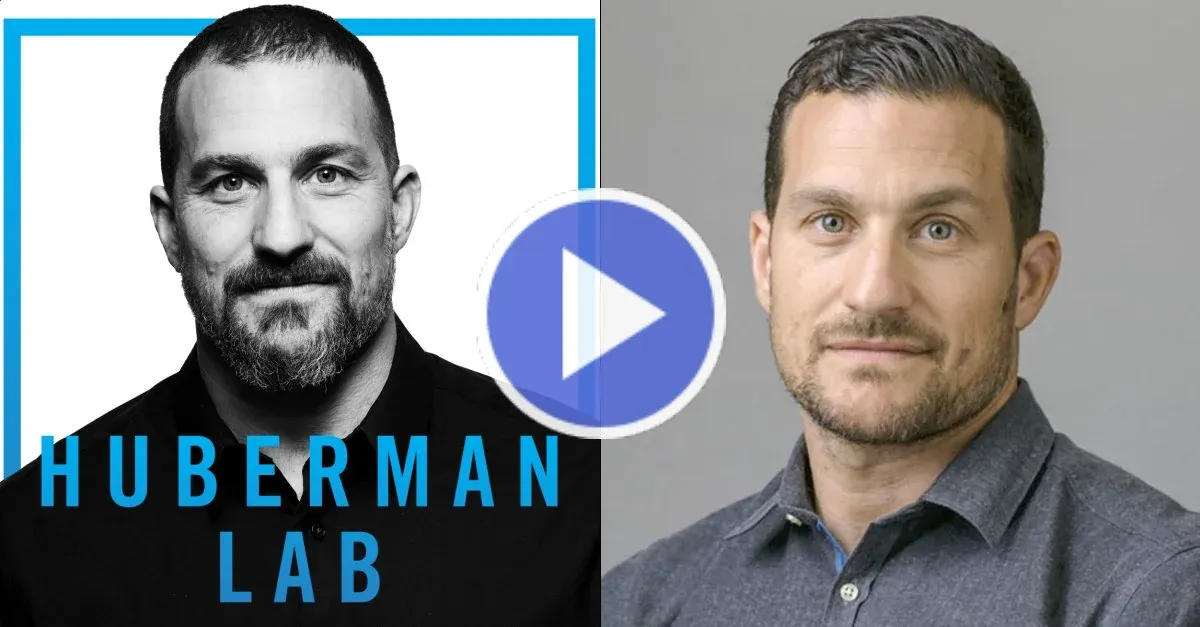
Huberman Lab Podcast
Starting your own podcast is ideal for building an audience and exposing your brand. Although you need to bear in mind that starting out is a lengthy process and that it takes some time to build traction. Podcasts also aren't the right choice for every business.
Being an interviewee is the opposite. It’s a lot easier to reach out to a podcast show for an interview based on your experiences and knowledge. Podcast hosts are always looking to speak to new people with lots of real world experience. Being interviewed allows you to cross promote your brand to an established fan base.
In short, podcasts add lot’s of value to your brand growth as well as your own knowledge.
Email Marketing
Email marketing is a great strategy to communicate and build a long term connection with your audience.
Emphasis on “long-term”. Building your email contacts takes a long time and is a result of good marketing practises with your client base. However, setting up a list of subscribers requires people to to opt in and hand their contact information over. Few will release their private details without good reason, and this is where creating content plays a pivotal role. Essentially, you trade information, their contact info for your knowledge.
Conclusion
Now that you have the tools it’s time for action. Anything of value that has longevity will take time to build, so it’s important to devise a strategy before you start. The consistency required for video content on platforms such as YouTube makes it very time intensive. SEO and Social Media Marketing a good place to start as these strategies take time to perfect, but the results are generated fairly quickly if done right. Pick one social media platform to master, and once you develop a framework you can transpose it to to the next, and so on.
Implementing one of these strategies right is better than doing five half-arsed. Paired with an emphasis on the quality of your business, rather than your end result (cash), it might be all you need to generate high returns and grow your business.
